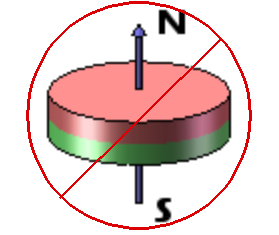
Technical summary: The ENC2 encoder senses the position of a two pole radially (or diameterically) magnetized disk over a full revolution using a hall effect sensor array. The sensor signal changes are converted to a digital quadrature signal for standard A/B/I signal productoin, and the position information stored as absolute position data on some registers, which are readable through a 3 wire synchronous serial interface.
Detail: Most disk magnets have north and south poles that go out from the flat sides of the disk. One side will be north, the other south. Like this:

But the special magnets (supplied with the encoder) have a north pole that goes out through a point on the curved side of the disk. And the south pole is 180' out on the opposite edge of the curve.

So when the shaft turns the disk, the magnetic field is rotating... not coming and going, but spinning at the same distance.
The chip in the encoder has hall effect magnetic field sensors in it. They have an axis of sensitivity where they pick up the magnet stronger if they are aligned with the magnets field. And there are many of them... 4000 in the ENC2b. Each arranged around a circle in the chip. So one of them is best aligned with the field of the disk magnet. And that one is the one that the chip reports as the current position.
Finally, a circuit in the chip keeps track of which one was aligned and which one is now aligned and puts out the quadrature pulses as that change is detected. Speeds up to 75K RPM on the ENC2a (28K RPM on the ENC2b) are supported.